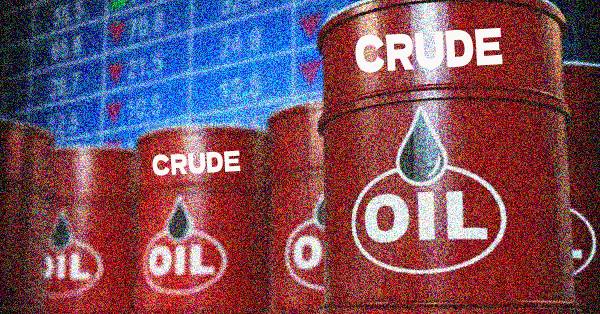The QNB also expected prices to be well supported in a range of between $90 and $115 per barrel over the coming quarters
Qatar National Bank (QNB) said that crude oil prices could see further upside, expecting physical markets to tighten further on the back of supply constraints and stronger global demand, QNB said in its weekly report. The QNB also expected prices to be well supported in a range of between $90 and $115 per barrel over the coming quarters.
In its weekly report, QNB said oil markets have been experiencing unprecedented bouts of volatility and dislocation since the pandemic started in early 2020. In fact, exogenous shocks to oil markets have been so large that prices followed extreme upward and downward swings in relatively short periods of time.
“Oil markets have been experiencing unprecedented bouts of volatility and dislocation since the pandemic started in early 2020. In fact, exogenous shocks to oil markets have been so large that prices followed extreme upward and downward swings in relatively short periods of time.”
At the start of the pandemic, a negative demand shock from large-scale global lockdowns amplified the effects of a supply glut that was accompanied by a “market share war” amongst oil exporters. This led to a market rout that was so severe that it caused a temporary collapse in market conditions, as inventories were above full capacity while at the same time transportation costs exploded. Brent crude, the most relevant benchmark for global oil trade, bottomed below the USD 20 per barrel mark in late April 2020.
From April 2020 to end of year 2021, crude oil prices experienced a remarkable turnaround. This was supported by a faster than expected post-pandemic global economic recovery and active output management by OPEC+ member countries, led by Saudi Arabia and Russia. An additional spike in oil prices early this year was further amplified by the Russo-Ukrainian conflict, which took Brent prices to close to USD 130 per barrel in March 2022.
However, crude prices have corrected significantly since mid- 2022, led by both higher than expected supply and lower than expected demand. On the supply side, higher volumes were the result of continuous and ongoing Russian crude exports despite sanctions, OPEC+ output increases and the emergency use of US oil strategic reserves. On the demand side, subdued activity was driven by Zero-Covid policies in China and an acute economic slowdown in Europe and the US, caused by the effect of higher inflation on disposable incomes and aggressive policy tightening across major economies.
Moving forward, despite continued volatility, Brent prices are expected to remain well supported with some upside potential. Two factors underpin our view.
The report attributed the possibility of continued high oil prices in the future to two factors: “First, oil prices are not particularly expensive in relative terms. The current overall cost of oil demand amounts to approximately 3.6% of global nominal GDP, much below the historically problematic threshold of 5% of GDP, when the “oil price burden” starts to affect consumption and investment in a more negative way. Last time, such event of a 5% price burden occurred during the Great Financial Crisis in 2008. If oil prices today were at 5% of nominal GDP, Brent prices would average USD 140 per barrel. This implies that the global economy could absorb Brent prices of up to this level before global demand is significantly impacted. At the time of writing, Brent prices are up more than 20% from pre-pandemic levels in late 2019 to the current level of around USD 80 per barrel. This is more or less in line with other major commodities and asset classes, such as copper, gold and the S&P 500 index of US equities, which implies that oil prices are following the more general trend of post-pandemic “asset inflation.”
“Second, we expect the supply-demand balance to move into volumetric deficits over the coming months. On the supply side, OPEC+ countries are already planning to reduce oil output in order to sustain prices above certain levels. Tighter European sanctions against Russian crude exports will start to be implemented, including newly established price caps on Russian supply, further disrupting energy trade. Shipping and transportation bottlenecks will prevent a full re-routing of Russian oil exports from Europe to Asia, which will then reduce Russian oil supply. In addition, the US government will be forced to stop selling crude oil from its strategic reserves as inventories are declining rapidly to multi-decade lows that threaten the country’s energy security.”
“On the demand side, after several quarters of negative economic growth de-ratings by analysts and international organizations, there is now scope for a more positive outlook. In fact, we expect stronger than previously anticipated economic growth in all major economies over the next couple of quarters, including in the US, Europe and China. High frequency data points to resilient US consumption. Winter in Europe is likely to be milder than expected, suggesting less damage from the energy crisis. China is set to benefit from a cyclical recovery as it gradually moves away from Zero Covid and presses ahead with policy easing. Hence, global demand for oil should increase.”
“All in all, crude oil prices could see further upside, as we expect physical markets to tighten further on the back of supply constraints and stronger global demand. We expect prices to be well supported in a range of between USD 90 and USD 115 per barrel over the coming quarters.” the QNB report said.









































